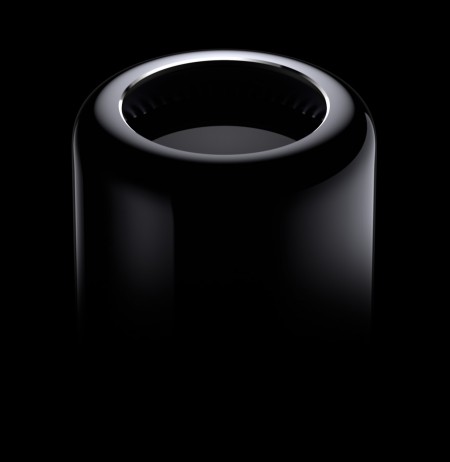
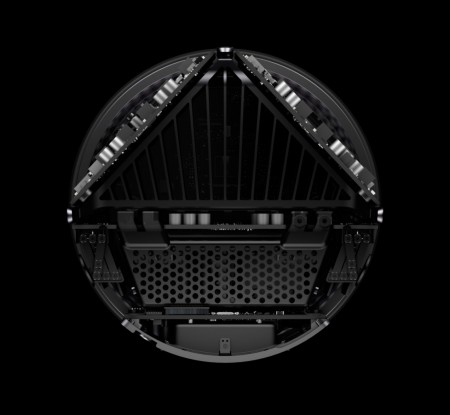
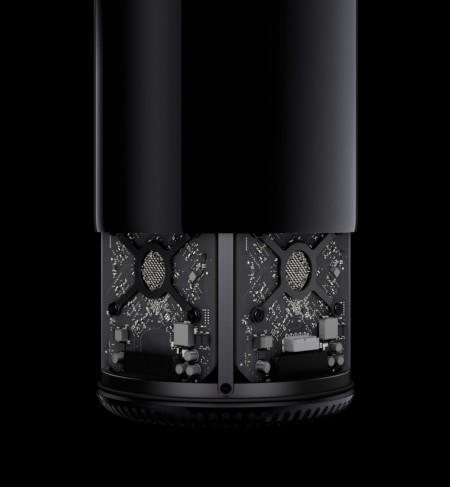
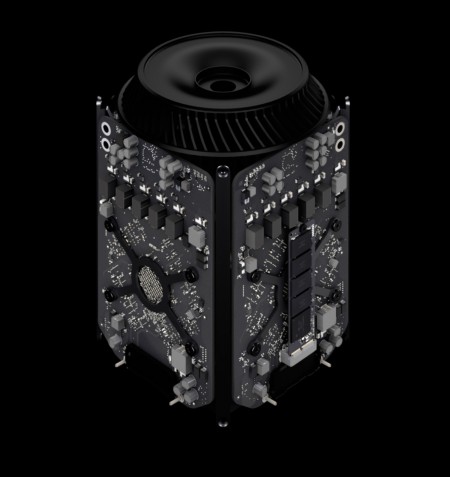

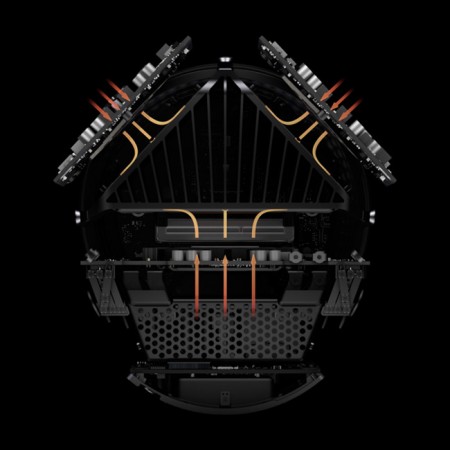
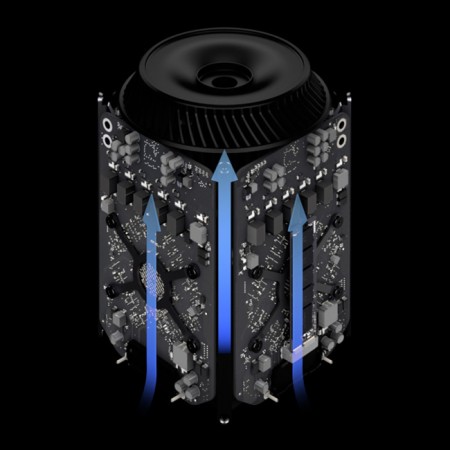
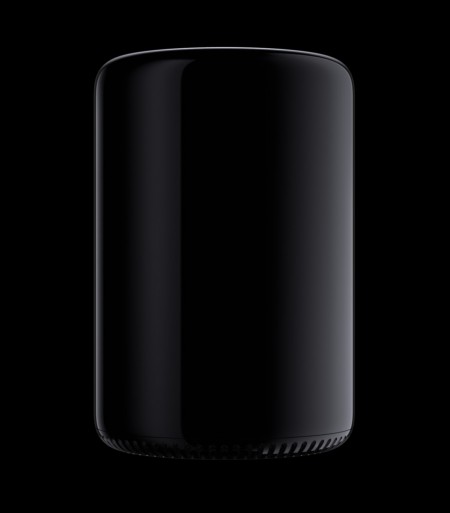
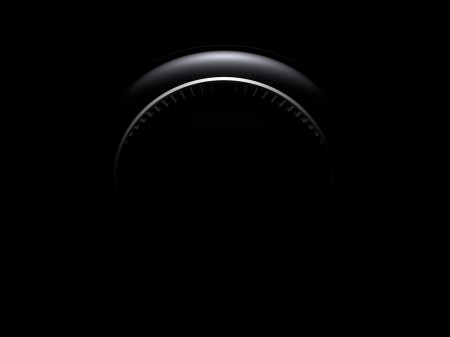
I have never owned a Mac Pro nor do I ever plan on owning one (probably, never say never). I am writing this from the perspective of a life-long PC user (which I am) who thinks very highly of Apple products (I use Macbook Pros for the Tycho live shows). I love OS X, I love Apple hardware; I just prefer PC as my desktop environment when creating music, design, and video. I don’t have any great explanation, I just do. But I’ve always envied those shiny aluminum behemoths lurking in the corners of my friend’s studios. The interior of the Pros was always what did it for me: that blue color on the PCBs, the brushed finish on the capacitors, the thermal compartments. So I too was waiting on this new machine, if only to see what Apple would come up with next.
Considering I’m not a Mac Pro user it’s not really my place to be thrilled or disappointed, I guess I’d just say I’m surprised. This was a radical step in a new direction and for that, I applaud Apple’s stones. With their dominance in the consumer sector this could have gone two ways: The Mac Pro could have just gone away, or, with nothing to really gain or lose, they could do something completely unexpected and truly innovate. They chose the latter and I think it’s a great thing for the PC industry as a whole.
I would have said let’s put aesthetics aside and just discuss the specs on this machine, but it seems the two are inexorably linked, which depending on how you view this, could be a good or bad thing. On the one hand it’s compact and sleek, on the other it seems very proprietary, further limiting the already limited list of compatible hardware. But don’t forget what’s around back: six Thunderbolt 2 ports. The first thing I thought when Thunderbolt 1 was announced was “here comes modular computing”. The first thing I thought when I saw the 2013 Mac Pro and the Thunderbolt 2 announcement was “here is the face of modular computing”. A compact central computing element with an external interconnect protocol capable of PCIx+ speeds. This opens some very large doors in terms of upgrading and/or easily and quickly adjusting your system for changing needs.
The form factor is incredibly efficient (take a look at the Mac Pro site at Apple for more on the unified thermal architecture, brilliant). For someone who transports a very large PC ATX case to and from various studios, the idea of a compact, tubular enclosure like this is a dream. I could fit this thing in a messenger bag or a small flight case. For tour it could be great too; mount two of these horizontally in a flight case so that when the case caps are removed the intake and exhaust are exposed. I’ve seen the old Mac Pros mounted two-up in 19″ flight cases on stage before, it’s a huge footprint, this would be a welcome change for many a stage manager / tech I’m sure. As I’m writing this I’m starting to convince myself this might make a good next desktop, we’ll see.
All in all I think it’s a beautiful piece of engineering with the specs to back it up, but what do I, a lowly PC user, know? What do you current Pro users think? Does this scare you? If so, why? What do you think of the look? Are you going to get one?
The New Mac Pro

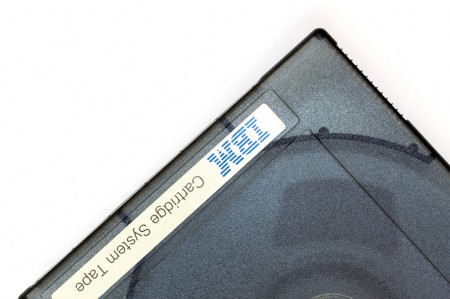
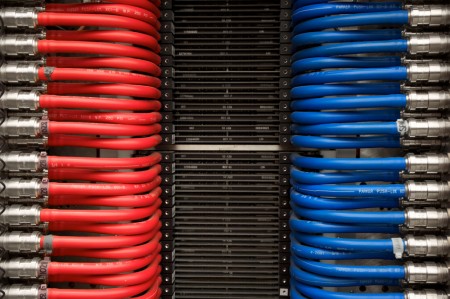
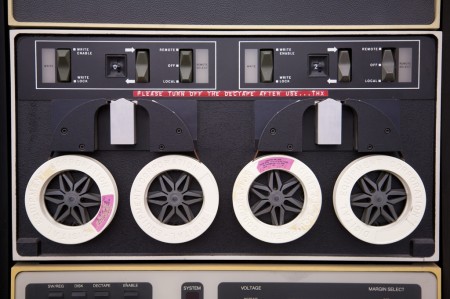
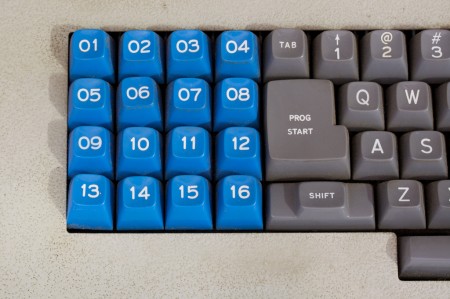
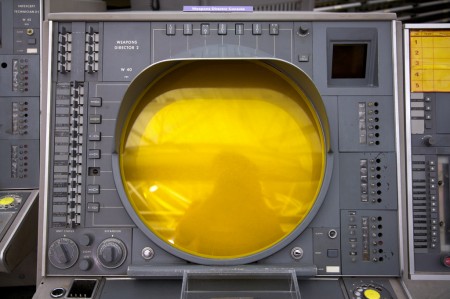
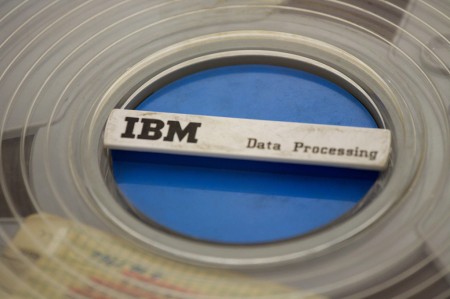
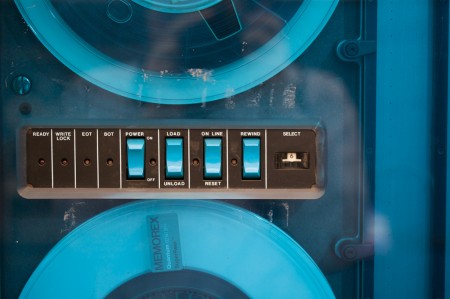
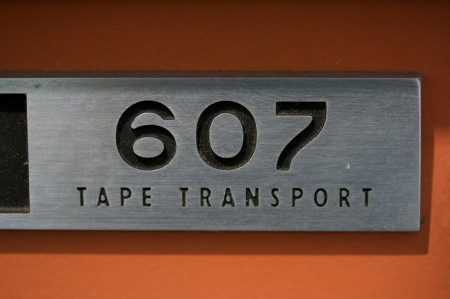
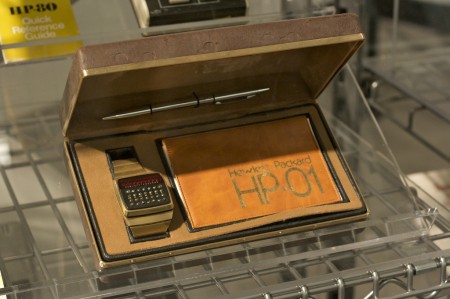
Great set of photos from the Computer History Museum. So great that someone is preserving this incredible hardware. Required reading: Core Memory. And that watch! Amazing…
via CHM: Artifacts
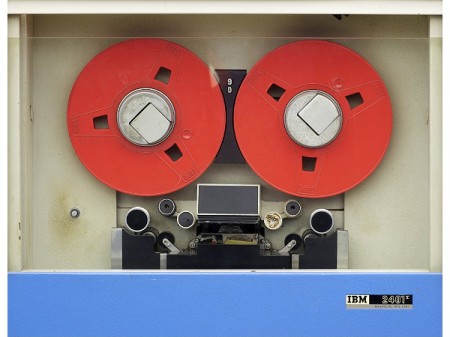
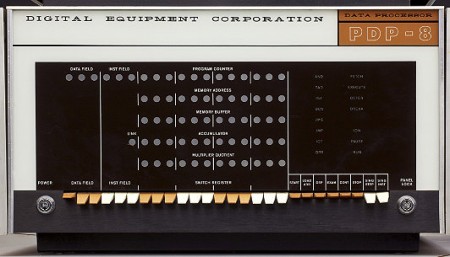

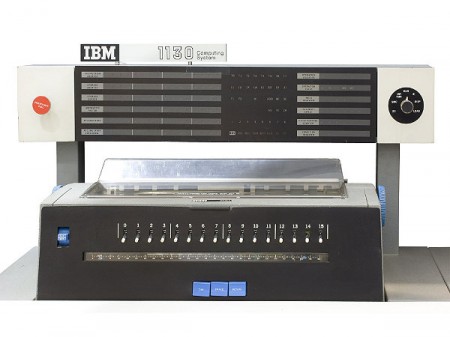

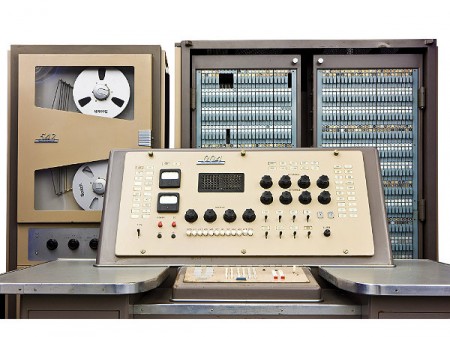
As a follow up to the previous post on vintage computer brochures I wanted to share the work of Mark Richards. Richards shoots many of the images that appear on the Computer History Museum website, and his photography adds an appropriate sense of reverence for the outdated machines.
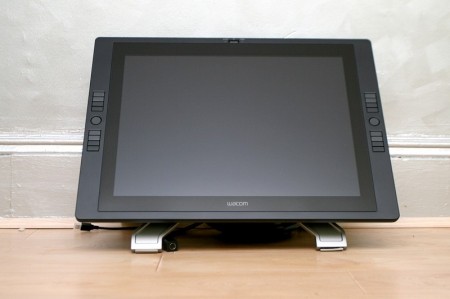

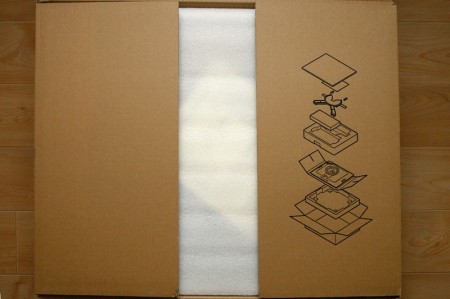
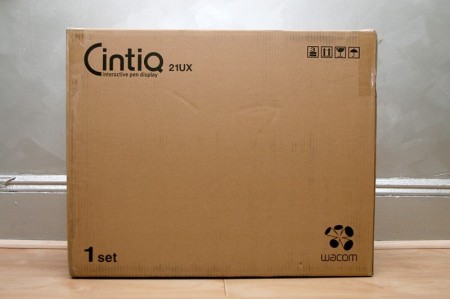
Saw this set of Cintiq unboxing photos on Engadget today and even though the concept of documenting a retail product unboxing seems ridiculous, I couldn’t resist. Ever since I saw a Cintiq (a combination LCD display and tablet) on demo in Barcelona (OFFF) a few years back I’ve been wanting one. I’m not sure that it would benefit me that greatly but it would be fun to find out. Maybe not $1,999 (msrp) worth of fun, but definitely something I’d like to try.
The problem is that this kind of device relies on a mode of interaction few of us are very familiar with so it’s tough to make the leap without knowing if it will work for you. It’s not like you find these on demo anywhere; the only place I know of that stocks them in San Francisco is Calumet and they have them tucked away in some back corner, there’s not even a floor model out much less a working display last time I checked. I wish they had some sort of trial period but I suspect that would be a bad thing for me; I’m pretty convinced if I really spent some time with this thing I wouldn’t want to give it back. The only drawback I heard was poor color representation due to the touch surface over the screen, hopefully they’ve remedied that issue with this latest iteration.
Some questions: Anyone using one of these? Care to share your feelings? Everyone else: Are you planning on getting one? If not, would you use this if someone gave you one? How much cheaper would it have to be to make you consider it? Current Wacom users, does this seem like an improvement or would you rather stick with your regular tablet? Discuss in the comments
Link

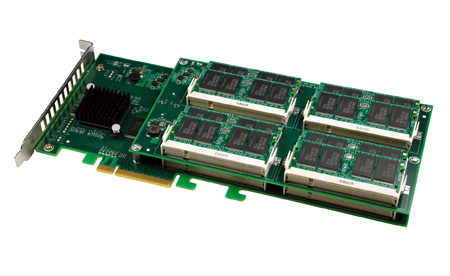

You may have noticed that I’ve posted quite a bit on the subject of SSD drives over the past couple years. The speed this technology can afford has the potential to finally set us free as artists so that we can focus on our work and not beach balls and hourglasses. The main bottleneck of modern computers is the hard disk drive, which has inexplicably been frozen in time at speeds which have remained constant almost as long as I can remember. Remove this bottleneck and a whole new world opens up.
The problem with SSD so far is it’s failure to truly deliver on it’s promises of speed. Sure, 250MB/s is fast, but only marginally quicker than a standard HDD. So I was excited to see the announcement from OCZ that a new version of their Z-Drive, the “R2” is due out soon.
The original Z-Drive was somewhat of a disappointment but — at least from the specs on this one — they seem to have learned some lessons from that initial attempt. The new model sports an 8 way RAID 0 setup (basically like 8 SSD drives in RAID 0 on a hardware controller — beats the heck out of my setup) — and speeds around 1.4GB/s. In case you didn’t read that correctly: 1.4GB/s. Insane speeds. And that’s both ways, read and write.
Imagine having this thing set up as your Photoshop swap drive (or, as the Engadget article suggests, editing raw 1080p footage in real time). In PS, I’d imagine you could tear through 24×36″ @ 300dpi with hardly a delay. And at 2TB (the largest possibly configuration), the Z-Drive is truly massive for an SSD. You could fit your entire OS and your data on there for quick file open/saves. And with 1.4GB/s of overhead, I wouldn’t think twice about using the drive as my OS and swap at the same time.
Now for the price (which hasn’t been announced yet): expect ridiculous. The original model ranged from $1500-$2700 and I don’t see this one coming too far down from that. But for performance like this, you have to pay. And when you consider the potential cost of eight SSD drives totaling 2TB and a hardware RAID controller the Z-Drive starts to sound a bit more affordable.
OCZ Product page
Further reading at Engadget & Hot Hardware
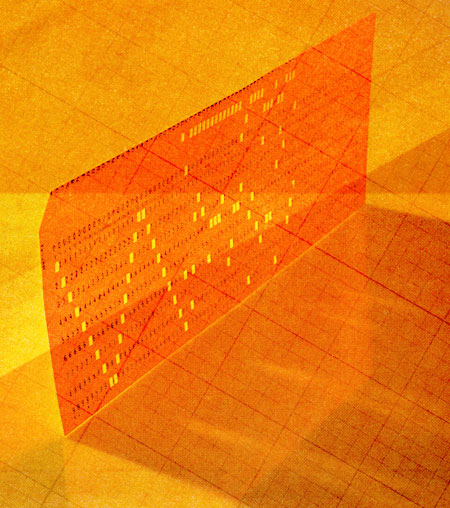
Regular backups should be an integral part of any creative’s computer workflow, unfortunately it seems to be neglected by a lot of people. It seems like an easy thing to do given that the alternative means betting your life’s work on the health of your hard drive but I guess it’s sort of like flossing or taking vitamins. As I’ve recently come to realize, fear of hardware failure isn’t the only reason to backup; fire, flood, theft, and user error all threaten to rob you of your hard earned intellectual property. I’ve always taken backups pretty seriously, but I have had some close calls and a very recent one has compelled me to adopt a more robust backup solution.
Some years ago — shortly before I finished my first album — my main data drive experienced a mechanical failure. Luckily I had a backup drive sitting right above it. So I bought a replacement for the original drive and went about installing it. As I was putting it in the case I accidentally dragged a screwdriver past the IDE pins on the backup drive (which was at that moment the only intact copy of all my work) in just the right way to arc the power connector and fry the controller board. At that moment I thought I had lost everything I ever did, the new album, and my sanity. Luckily the damage was isolated to the control board and I was able to pick up a similar drive and transplant it’s controller and recover my data. I learned a hard lesson that day and every since I’ve been more careful about backing up.
Fast forward to last week when it had recently occurred to me that I should have off-site backups. In a city like San Francisco, fire is a big concern and all the backups in the world can’t help you if they’re sitting in the same place as your data when it all burns to the ground. So I started leaving my backup drive at a friend’s house and bringing it home during the day to backup work from the previous night. The problem is that two weeks had passed since the last time I brought that drive home and backed up. So last week I was partitioning a disk during a Windows install and accidentally deleted the primary partition of my main data drive and that past two weeks of work. Fortunately, Partitions are relatively easy to restore (Active@ makes a very powerful data recovery suite) so this wasn’t a huge deal, but it definitely gave me flashbacks of the near catastrophe I had experienced years earlier and got me thinking I needed to start using a new system.
James E. Gaskin defines a good backup system as “Automatic, redundant, and restoreable” and I would like to add off-site to that list. The system I was using until today only covered only two of those bases. Now, I would love to use an online backup service — it would solve all of these problems — but I have about 1.5TB of files that need to be mirrored and a typical night of work will generate around 2GB of new files and/or file changes which need to be backed up. Every online solution I’ve seen would end up being ridiculously expensive at these sizes and given that my Comcast internet upstream is less than 1Mb/s, it’s really not practical if I need to move a lot of data, which is more often than not. Given all of that I’ve ruled out online backups until they bring fiber into my neighborhood or the cost of the services come way down. So I’m left with simply scaling up the backup scheme and using multiple traditional drives. The system I ended up going with is laid out like this:
1. Main data drive: A RAID5 array with three 1TB drives. This is the main drive that I work from and where I store all of the work. RAID5 uses rotating parity so that even if one of the drives experiences a failure a copy of all your data can be rebuilt from the two remaining drives. Reading and writing data from/to a RAID5 array is also much faster than a single drive (sort of like a redundant version of RAID0 – more info here) so it’s a nice bonus to have this as the working drive.
2. Local backup drive: One 2TB drive which is mirrored from the main drive every night. I use Backup Magic to do the mirroring. It’s light weight, powerful, and best of all: it only runs when I tell it to. I don’t like automatic backup apps that run in the background, they always tend to overstep their bounds and eat up system resources.
3. Off-site backup drive: One 2TB drive in a hotswap SATA bay (similar to this). The plan is to pop this in every week or so, mirror from the main data drive and then take it back off-site for safe keeping. Even if both local drives fail or my house explodes or something, at least I don’t lose my entire life’s work.
Just a note: This backup scheme is for my PC, on my Macbook Pro I use time machine to backup to a single external drive but the problem is that there’s no redundancy. If both drives fail, you’re screwed.
It’s easy to forget that as computer based creatives, everything we’ve ever done, all of our intellectual property, is sitting in a little metal box and there are a lot of things that can go wrong with that box. Regular backups are a must and off-site backups are highly recommended. I know the system I’m using isn’t foolproof — I guess nothing really is — but I feel a lot more secure knowing the data exists on three drives in two separate locations. How about you, what system do you use to backup? For all you Mac users, is Time Machine enough for you or do you have a secondary system in place? Anybody using an online backup solution? (and if so, what size is your data?) Let us know the comments
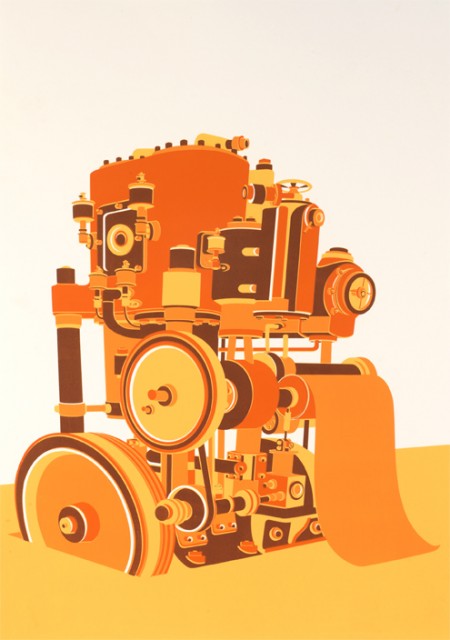
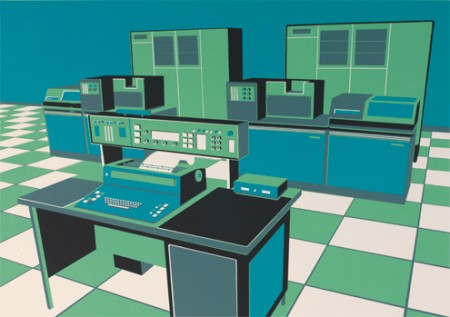
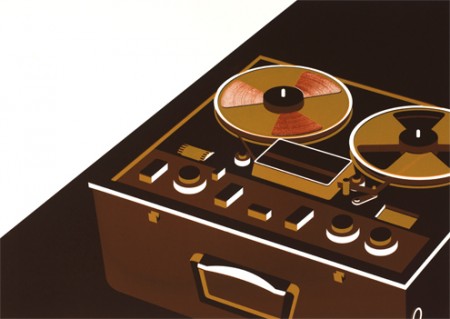
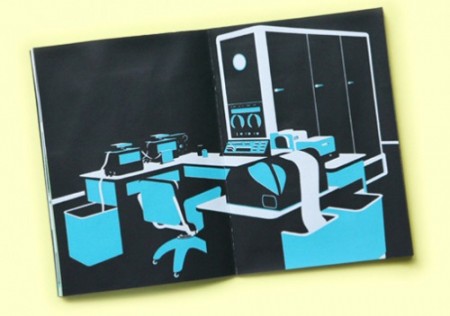
Said the Computer to the Specialist is a new book by Tom Rowe. It’s a collection of illustrations of analog recording equipment and long extinct super computers. Very stylish if you ask me. I would love to see some typography going on though — could really make some of these pieces. Nothing crazy, just some interesting titling to introduce some variety and that extra level of visual interest. Either way, some terrific illustrations.
Production is limited to 50 signed/numbered copies, so better act fast if you’re interested. Availible for purchase through Nobrow press.
via The Silver Lining
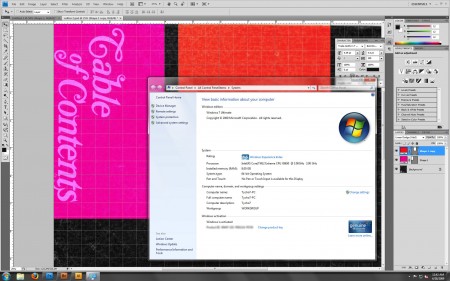
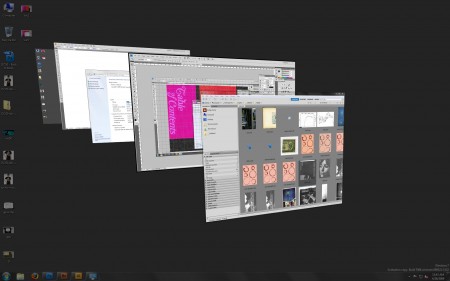
If you follow this blog you’ll know that the past year of my life has seen me running a veritable gauntlet of operating systems on my new-ish PC. I’ve run XP32, XP64, OS X, Vista32, Vista64, Server 2008×64, and now, finally, I am running the superb Windows 7 64-bit. Yes, superb, I didn’t expect it either. Although I did notice marked improvements in Vista/Server 2008 over XP, I always felt there was a compromise somewhere and it never felt quite as stable as I’d like. So it was with great anticipation last week that I followed my friend Dusty’s advice and installed the Windows 7 beta. It’s only been a week since the upgrade but I have really worked this thing hard and I am happy to report that it’s been the most stable and responsive OS experience I’ve had yet and outshines all of the examples mentioned above.
Although the beta program is “officially” closed, there’s no shortage of Windows 7 torrents to be had. Even Microsoft has tacitly endorsed the torrent acquisition method, honoring these versions with legitimate serials upon registration (although these serials are only valid until the final product is released). The install was a snap, it was very similar — but seemlingly even more streamlined — than with Vista and it’s right up there with the speed and ease of an OS X install routine. Once installed, it boots up very quickly and everything about the experience is very much “straight to the point”. Gone are the nags, pop-ups, and wizards (I hate wizards) of Vista/XP past, now virtually everything is disabled by default, letting the user choose what features they want. I usually spend the first hour of a new XP/Vista install going through and optimizing the settings, disabling services and generally clearing out the bloat and cutting the fat. With Windows 7 that process took literally 2 minutes, I only had to disable a few notifications and one of the more annoying features of the Aero theme (the slowly animated minimize/maximize of the windows).
Speaking of the Aero theme, Microsoft have “borrowed” liberally from the OS X “Aqua” interface on many fronts. From Windows 7’s new dock functionality to it’s feeble attempt at some sort of expose-esque functionality, they’re obviously taking cues from the success of their Mac brethren. While I think the new dock is very successful, I think the Windows expose falls flat. In fact the one big thing I still miss about OS X when working in Win7 is the show-all-windows / show-desktop hot corner functionality of the Mac; it’s just so damned useful. Unfortunately, the Windows 7 knock-off is not quite there.
Anyways, back to the install. I had all my fonts and the full CS4 suite loaded within 15 minutes and was tearing through 3GB PSB’s (Photoshop Large Document Format) shortly thereafter. In my experience Photoshop stability (and stability in general for that matter) is greatly improved in the new Windows. I also found noticeable (but not incredible) processing performance increases. Where I think Windows 7 really shines though is file handling and disk read/write functions. Saving and opening very large PSD’s has dramatically improved over Vista. Vista’s much maligned file handling was sluggish and inexplicably slow across the board. I’ve heard they had some sort of base-level DRM checking built into the core of the OS. That could be BS, but whatever it was it was a real problem and they’ve fixed it in Windows 7.
The icing on the cake came when I started working with Adobe Bridge CS4. In both XP and Vista I had horrible issues with Bridge, so bad that I had to quit using it. Every session would result in a crash, without fail, across the board. Every OS I have used until this point just didn’t play well with Bridge. But it seems to like Windows 7; I can churn out previews of PSB files in excess of 4GB in size with no problem. Thousands of NEF RAW files in one folder render to thumbs without a hitch now. Either of those would have choked Bridge half the time in the older OS’s on the same hardware. One glitch I’ve found is that the GPU acceleration in Photoshop is not working (see image below). It doesn’t recognize my video card as openGL capable even though I have the Win7 beta drivers installed, which was working fine under Vista. I suspect this is something that will be fixed sooner than later though through a driver update. Although now that the GPU acceleration is disabled and everything is running so smoothly, it makes me wonder if it was contributing to any instabilities I was experiencing under Vista. I guess that remains to be seen though.
A quick side note about the image below: Notice where it says “Available RAM: 7216”, that might be the number one reason I ditched the OS X install I had on this very same machine. PS is still 32-bit on OS X and therefore cannot utilize even half of that amount of RAM.
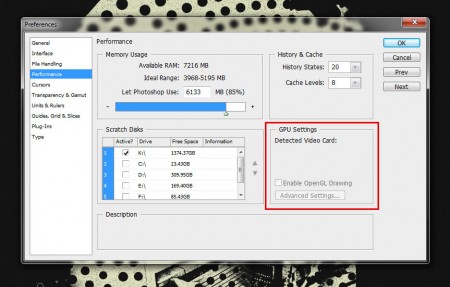
To be fair I haven’t put Win7 through it’s paces for audio yet, all of my testing has been with graphics apps only (Photoshop, Illustrator, Bridge, etc.) Next week I will be loading up Sonar and all the VST’s and giving that a spin. But Dusty, who uses Windows 7 solely for audio, has assured me that — with Ableton Live at least — it’s performing far better than Vista or XP on the very same machine. As a lifelong PC user (I do have a Macbook Pro, which I absolutely love for everything other than work) this is such a relief. Yes, Vista was a dog out of the gate, but anyone who has used it lately can’t help but recognize that Microsoft has gone a long was to fix the problems that plagued it and with Windows 7, I think they’ve finally gone the distance and realized the operating system that Vista was meant to be. I also think a lot of budget-minded creatives can now breathe a collective sigh of relief that the OS of choice for people who don’t have $4000 to spend on a computer is back.
So how about you, anyone else been using Windows 7? What have your experiences been so far? Sound off in the comments
Update: As Peter Stoinov pointed out in the comments, the much-improved Windows 7 Release Candidate comes out May 5th so you might want to hold off installing until then.
Update 2: Microsoft has announced that it will be offering Windows 7 RC1 free to the public for one year. Awesome.








































